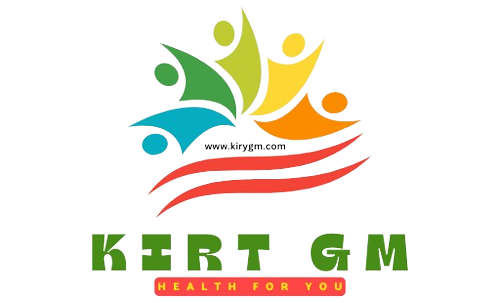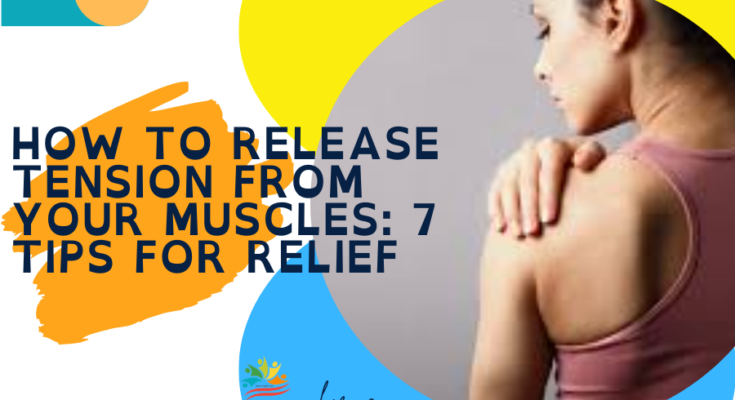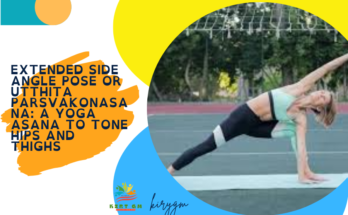Muscle tension is a common issue that many people experience due to various factors such as stress, poor posture, physical activity, or underlying health conditions. When left untreated, muscle tension can lead to discomfort, pain, and reduced flexibility. Fortunately, there are several simple and effective strategies you can use to release tension from your muscles and promote relaxation and well-being. In this article, we’ll explore seven tips for relieving muscle tension and achieving a greater sense of ease and comfort in your body.
1. Practice Deep Breathing:
Deep breathing is one of the most effective ways to release tension from your muscles and promote relaxation throughout your body. Take a few moments to sit or lie down in a comfortable position, close your eyes, and take slow, deep breaths in through your nose and out through your mouth. Focus on filling your lungs completely with each inhale and allowing your body to relax with each exhale. Deep breathing helps to increase oxygen flow to your muscles, reducing tension and promoting a sense of calm.
2. Try Progressive Muscle Relaxation:
Progressive muscle relaxation is a technique that involves systematically tensing and relaxing different muscle groups in your body to release tension and promote relaxation. Start by tensing a specific muscle group, such as your shoulders or neck, for 5-10 seconds, then release the tension completely and allow the muscles to relax for 20-30 seconds. Continue this process, moving from one muscle group to the next, until you’ve relaxed your entire body. Progressive muscle relaxation can help you become more aware of tension in your muscles and learn how to release it effectively.
3. Use Heat Therapy:
Heat therapy, such as warm baths, heating pads, or warm compresses, can help soothe sore muscles and relieve tension. Apply heat to the affected area for 15-20 minutes at a time to help increase blood flow and relax tight muscles. You can also try taking a warm bath with Epsom salts, which can help reduce inflammation and promote muscle relaxation. Just be sure to use caution when applying heat therapy to avoid burns or injury.
4. Practice Gentle Stretching:
Gentle stretching can help release tension from your muscles and improve flexibility and range of motion. Focus on stretching the muscles that feel tight or tense, holding each stretch for 15-30 seconds and breathing deeply into the stretch. Avoid bouncing or forcing the stretch, as this can cause injury. Instead, ease into each stretch gradually and listen to your body’s signals. Regular stretching can help prevent muscle tension and promote overall muscle health.
5. Get Regular Exercise:
Regular exercise is essential for maintaining muscle health and preventing tension and stiffness. Engage in activities that you enjoy, such as walking, swimming, yoga, or Pilates, to help keep your muscles strong and flexible. Aim for at least 30 minutes of moderate-intensity exercise most days of the week to reap the benefits for your muscles and overall well-being. Be sure to include both cardiovascular exercise and strength training in your fitness routine for optimal results.
6. Practice Mindfulness Meditation:
Mindfulness meditation involves bringing your attention to the present moment and observing your thoughts, feelings, and bodily sensations without judgment. By practicing mindfulness meditation regularly, you can become more aware of tension in your muscles and learn how to release it consciously. Take a few minutes each day to sit quietly and focus on your breath, allowing yourself to let go of tension and stress with each exhale. Over time, mindfulness meditation can help you cultivate a greater sense of ease and relaxation in your body.
7. Get a Massage:
Massage therapy is a highly effective way to release tension from your muscles and promote relaxation and well-being. A skilled massage therapist can use various techniques, such as Swedish massage, deep tissue massage, or trigger point therapy, to target specific areas of tension and help release tight muscles. Schedule regular massages as part of your self-care routine to help prevent muscle tension and promote overall muscle health.

Conclusion:
In conclusion, releasing tension from your muscles is essential for promoting relaxation, reducing discomfort, and improving overall well-being. By incorporating these seven tips into your daily routine, you can effectively release tension from your muscles and achieve a greater sense of ease and comfort in your body. Whether you practice deep breathing, progressive muscle relaxation, heat therapy, gentle stretching, regular exercise, mindfulness meditation, or massage therapy, finding the right combination of techniques that work for you can help you maintain healthy, relaxed muscles and enjoy a higher quality of life.




